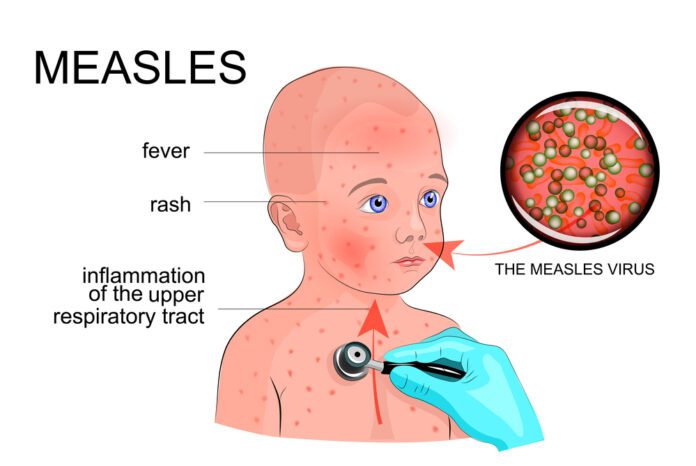Overview Of Rubeola (Measles)
Rubeola is synonymous with Measles. Measles is a very contagious (easily spread) illness caused by a virus.
Commonly Associated With
Red measles; 10-day measles; measles; Rubeola
Causes Of Rubeola (Measles)
Measles is spread by contact with droplets from the nose, mouth, or throat of an infected person. Sneezing and coughing can put contaminated droplets into the air.
If one person has measles, 90% of the people who come in contact with that person will get the measles, unless they have been vaccinated.
People who had measles or who have been vaccinated against measles are protected from the disease. As of 2000, measles had been eliminated in the United States. However, unvaccinated people who travel to other countries where measles is common to have brought the disease back to the United States. This has led to recent outbreaks of measles in groups of people who are unvaccinated.
Some parents do not let their children get vaccinated. This is because of unfounded fears that the MMR vaccine, which protects against measles, mumps, and rubella, can cause autism. Parents and caregivers should know that:
Large studies of thousands of children have found no connection between this or any vaccine and autism.
Reviews by all major health organizations in the United States, Great Britain, and elsewhere all found NO LINK between the MMR vaccine and autism.
The study that had first reported a risk of autism from this vaccine has been proven to be fraudulent.
Symptoms Of Rubeola (Measles)
Symptoms of measles usually begin 10 to 14 days after exposure to the virus. This is called the incubation period.
The rash is often the main symptom. The rash:
- Usually appears 3 to 5 days after the first signs of being sick
- May last 4 to 7 days
- Usually starts on the head and spreads to other areas, moving down the body
- May appear as flat, discolored areas (macules) and solid, red, raised areas (papules) that later join together
- Itches
Other symptoms may include:
- Bloodshot eyes
- Cough
- Fever
- Light sensitivity (photophobia)
- Muscle pain
- Red and inflamed eyes (conjunctivitis)
- Runny nose
- Sore throat
- Tiny white spots inside the mouth (Koplik spots)
Exams & Tests
The health care provider will perform a physical exam and ask about symptoms. The diagnosis can be made by looking at the rash and seeing Koplik spots in the mouth. Sometimes measles can be hard to diagnose in which case blood tests need to be done.
Treatment Of Rubeola (Measles)
There is no specific treatment for measles.
The following may relieve symptoms:
- Acetaminophen (Tylenol)
- Bed rest
- Humidified air
- Some children may need vitamin A supplements, which reduce the risk of death and complications in children who DO NOT get enough vitamin A.



